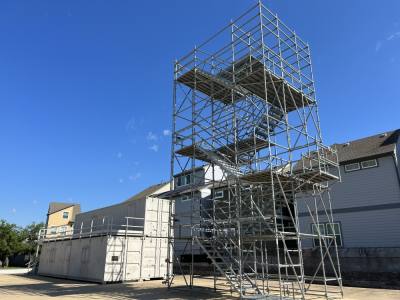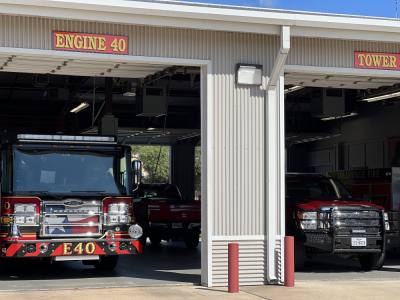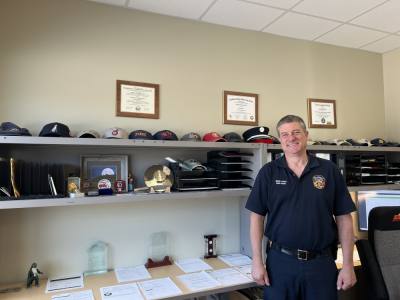When Landi joined the team in 1992, the department was completely volunteer run with a staff of 40-45 people and two stations. Fast forward to 2023, the department is now run by 19 paid staff members and 15 volunteers in its station off Anderson Mill Road.
“Our volunteers range from people that are doing the exact same thing as the paid staff—they’re running into burning buildings and helping people—to people that support the organization in times of need, like Snowmageddon [in 2021],” Landi said.
Established in 1975, the Jollyville Fire Department provides service to an 11-mile area within Williamson County and beyond when necessary. Known as “Emergency Services District No. 1” on residents’ tax bills, Landi said the district likes to come first.
“We were the first volunteer fire department in the area to have [an automated external defibrillator] back in the ’80s, we were the first fire district in Williamson County, and then we became the first emergency services district in Williamson County,” Landi said. “We like to be the trendsetter.”
The fire department responds to roughly three to four calls a day, but that number spikes to 18-24 in weather events such as Winter Storm Uri. The station handles roughly 1,000 calls annually, Landi said.
While “fire” is in the job title, calls for fires are around 2% of the calls the department receives, Landi said. Most of the calls received are medical and service related.
“The No. 1 thing that people don’t really realize is when you dial 911 for a medical call, you get a fire truck,” Landi said. “We’re part of what’s called a tiered system. You dial 911; the fire trucks get there as first responders because we are closer than an ambulance.”
As a “borderline” department located on the border of Travis and Williamson counties, firefighters from the Jollyville Fire Department are in constant coordination with other local emergency service departments, Landi said.
Along with coordinating on assignments, the departments also work together on training. The Jollyville department serves as a regional training facility with an outdoor area for nine separate training simulation scenarios.
“Regional training isn’t just a classroom, so we’ve got a lot of stuff that others don’t have in the area,” Landi said. “We try to be a focal part of the emergency response in the entire region.”
Traditional methods of fire training burn hay and wood, but the Jollyville Fire Department has upgraded to the use of propane gas and artificial smoke in training to increase the safety for people in training and ensure personnel are available in times of emergency, Landi said.
“[Burning wood and hay] is bad for you,” Landi said. “It’s cancer causing, so then you have to take the entire crew out of service; you have to have another crew covering for them while they’re training. We’ve redone all of that to make it a little cleaner, a little safer to train while still having the realism.”
Outside of responding to and preparing for emergencies, the Jollyville Fire Department stays involved in the community, Landi said. The department participates in several holiday and school events along with parades.
“It’s not all just about 911 or running when someone calls,” Landi said. “It’s about your involvement with the community on a day-to-day basis.”
Tracking training
As a regional training facility, the Jollyville Fire Department has nine training simulations that can be run on the facility grounds, including:
- Sprinkler simulations: Firefighters learn how to start/stop an open fire sprinkler
- Live fire simulations: Teach firefighters how to navigate live fire situations along with smoke and heat conditions
- Gas simulations: Instructs firefighters to locate and stop an underground pressurized gas line leak
- Standpipe simulations: Firefighters determine how to use the building’s fire response system to provide water to different levels of a building
- Search and rescue simulations: Search and rescue techniques are taught to firefighters in a very low-visibility, multilevel structure
- Roof simulations: Movement on sloped and elevated services is taught to firefighters









